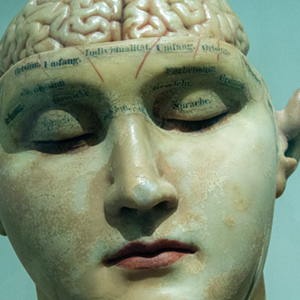It is strangely common to talk about our brain and our body as separate entities. Or to consider our senses and sensibilities as opposites, at war with each other. And yet, even a cursory exploration of the question exposes an obvious truth: our brain is entirely in and of our body, not just in its physical connection but in its process and purpose.

What we identify as “the brain” can certainly be localized as a separate-looking aspect of the body. It has unique functions that make it different than other identifiable aspects. And entire disciplines of science and medicine dig into its unique and separate qualities. Many spiritual or contemplative practices also focus on the brain, often working to release it from its bodily connections and distractions, to find and foster pure intellect, spirit, or insight.
And yet the brain is less of a separate entity than a node in a network of skeletal, muscular, nervous, endocrine, cardiovascular, lymphatic, respiratory, digestive, urinary, and reproductive systems that together keep us alive. By many accounts, the primary function of the brain is not to think abstractly and ponder your current work dilemma. Says Lisa Feldman Barrett in Seven and a Half Lessons about the Brain:
Your brain’s most important job is to control your body…by predicting energy needs before they arise so you can efficiently make worthwhile movements and survive. Your brain continually invests your energy in the hopes of earning a good return, such as food, shelter, affection, or physical protection, so you can perform nature’s most vital task: passing your genes to the next generation.
For a complex body in a complex world, that job is an expensive endeavor. And brain tissue is therefore a costly investment of our resources, requiring over 22 times the amount of metabolic energy as an equivalent unit of muscle tissue. But even so, to imagine the brain as separate or distinct from the body is to wander into a sand trap that’s difficult to escape.
In reality, the brain and the body are entirely intertwined. Our cognition isn’t separate from our sensory experience, it is “influenced, perhaps determined by, our experiences in the physical world.” Put another way, by Evan Thompson, “The brain enables cognition, but cognition isn’t a brain process; it’s a form of embodied sense-making.” In short, what we often call the work of the brain or the mind is really the work of a whole brain-body-environment system that has evolved to keep us alive, alert, and ready for what’s around us.
To which an arts manager might say “so what?” There are so many implications for how we navigate art making, arts organizations, audiences, and community that it’s difficult to know where to start. Among the leading issues:
- That organization’s aren’t collections of conscious brains, but rather collections of whole humans with complex sense-making and action brain-body-environment systems. To manage yourself and others as rational, abstract intellects will be to live in constant surprise.
- That artistic expressions and experiences live at the holistic interplay of brain, body, and environment. The reason we’re drawn to and animated by expressive acts is deeply rooted in the way we exist in the world. (There’s fascinating work on how dancers and non-dancers experience dance performance, with dancers showing activation of the motor-regions of their brain even when only watching the dance.)
- That a wider view of embodied brains reveals a world of ways that our services and systems are narrowly constructed for certain bodies, excluding others. It suggests that physical access barriers are only one of many we should attend to.
- That artistic practices and processes can offer us a path to understanding and engaging embodied cognition. Artistic practice often lives at the intersection of sensation and abstract thought, and has developed ways to engage the whole view at once.
[NOTE: This post is part of a series I’m calling substrate, about the world beneath the world of arts management.]

